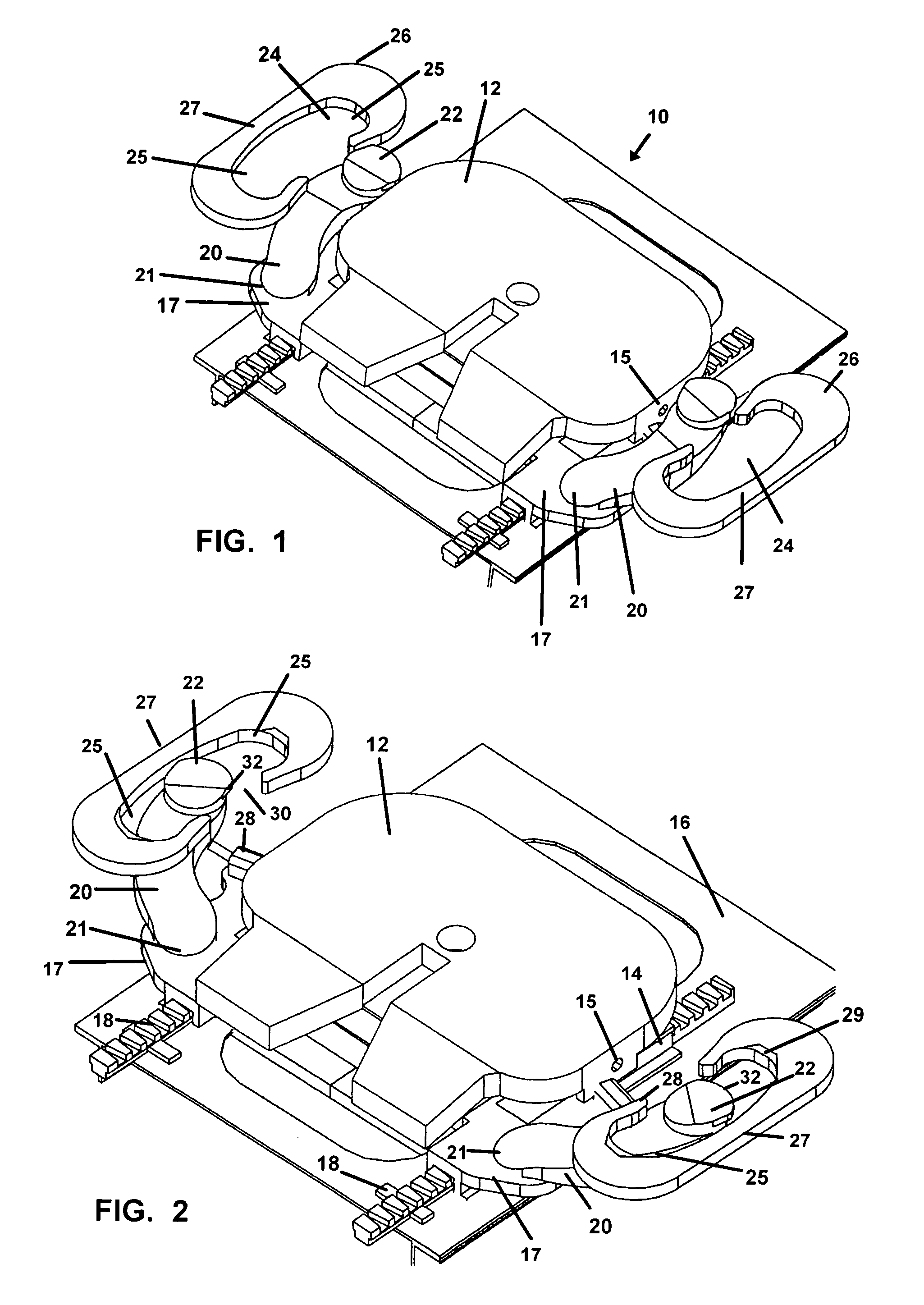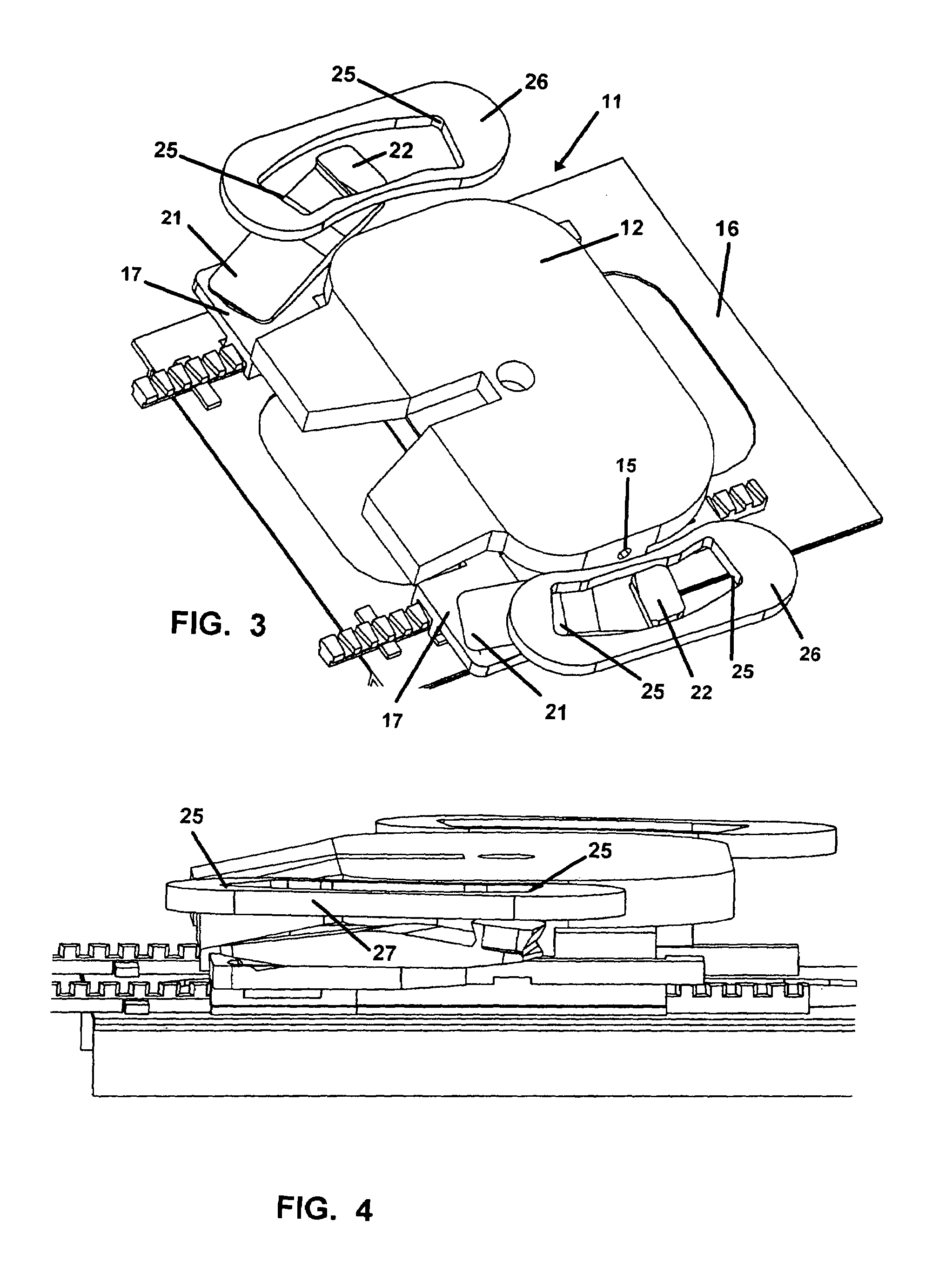Anti-jackknife system
a technology of jackknife and attachment device, which is applied in the direction of braking system, automatic initiation, transportation and packaging, etc., can solve the problems of accidents which contribute to such a huge cost, the flexibility provided by the pivoted attachment device to the trailer has a down side, and the trucking industry is costing over $60 billion dollars annually. , to achieve the effect of minimizing maintenance costs, minimizing the size and number of components, and minimizing maintenan
- Summary
- Abstract
- Description
- Claims
- Application Information
AI Technical Summary
Benefits of technology
Problems solved by technology
Method used
Image
Examples
Embodiment Construction
[0040]Referring now to the drawings of FIGS. 1–10, FIG. 1 is a perspective view of a first preferred embodiment of the anti-jackknife device 10. In the preferred embodiments herein described a conventional fifth wheel 12 is pivotally attached to a support bracket 14 employing pins 15 which is a well-known configuration of the fifth wheel 12 in tractors used to pull trailers which are adapted to engage upon the fifth wheel 12 during transport. The support bracket 14 is engaged upon a support frame 16 of the underlying tractor or truck and laterally translatable on a geartrain 18 to a plurality of removably fixed positions. This is done to adjust the position of the fifth wheel 12 to optimally position the load in the trailer, over the rear wheels of the tractor. However, there are also employed in the trucking industry fifth wheels 12 which are mounted in a permanent position on the tractor and which do not translate. The invention described herein can be used for either a translatin...
PUM
 Login to View More
Login to View More Abstract
Description
Claims
Application Information
 Login to View More
Login to View More - R&D
- Intellectual Property
- Life Sciences
- Materials
- Tech Scout
- Unparalleled Data Quality
- Higher Quality Content
- 60% Fewer Hallucinations
Browse by: Latest US Patents, China's latest patents, Technical Efficacy Thesaurus, Application Domain, Technology Topic, Popular Technical Reports.
© 2025 PatSnap. All rights reserved.Legal|Privacy policy|Modern Slavery Act Transparency Statement|Sitemap|About US| Contact US: help@patsnap.com



